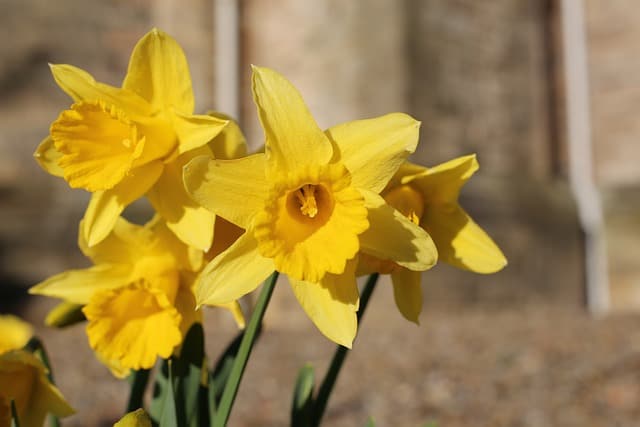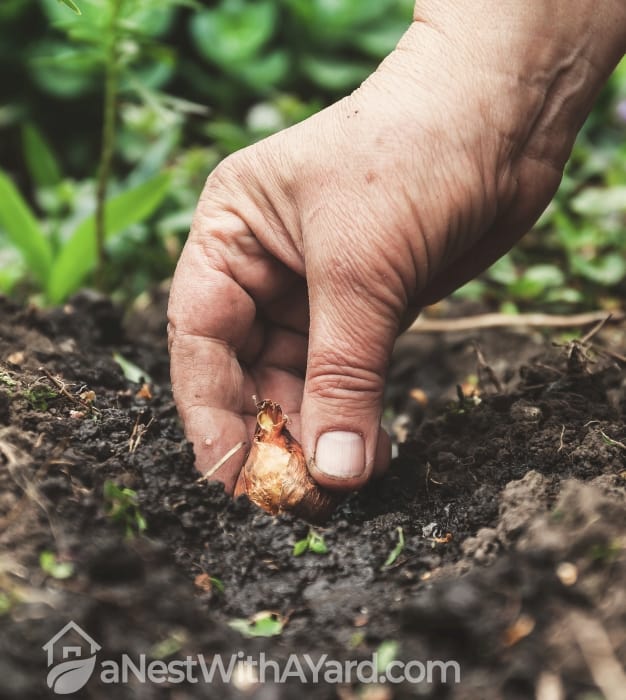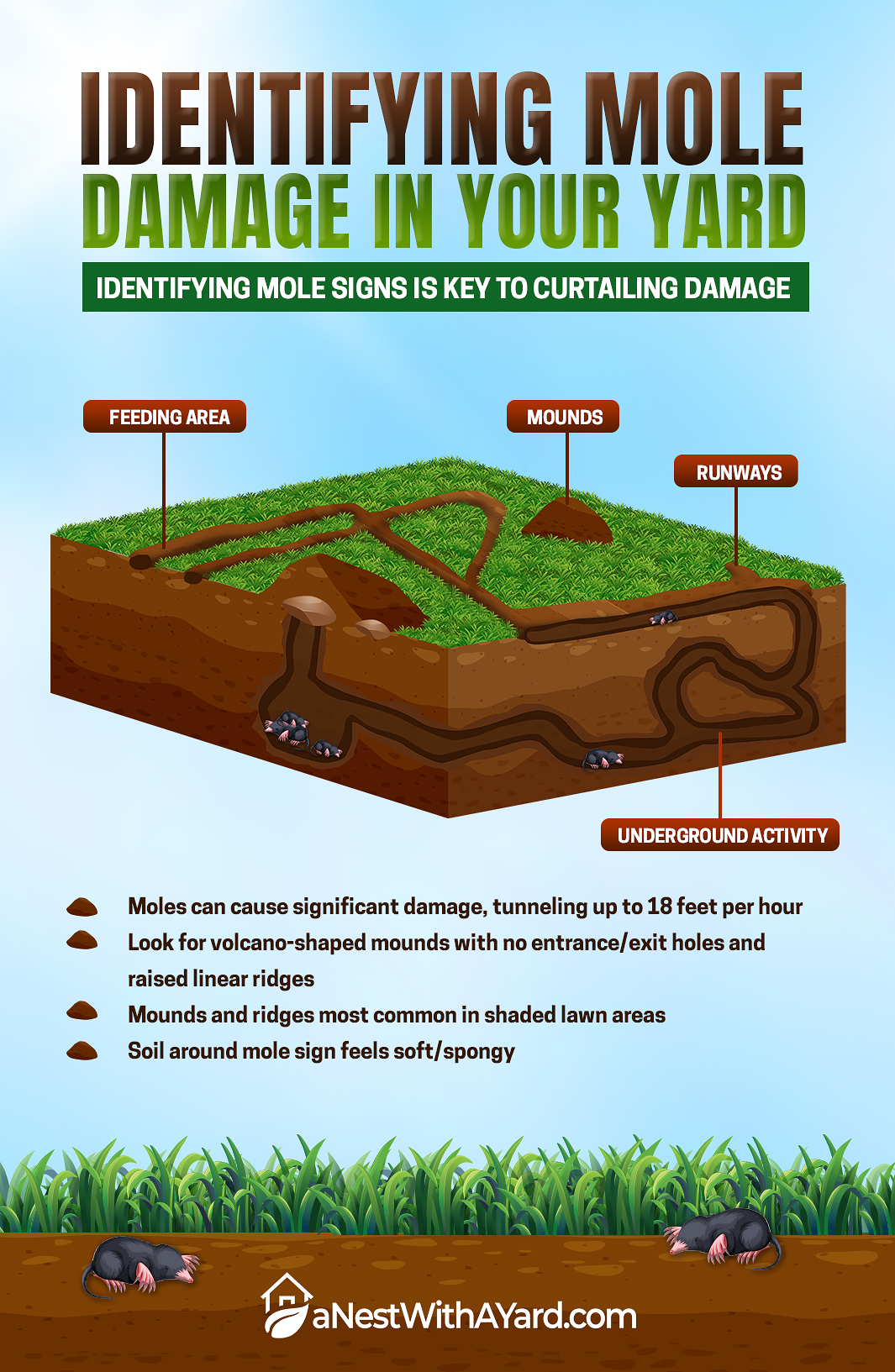Gardening season is upon us! Unfortunately, the UK’s Royal Horticultural Society warns moles are most active in early spring too. Hence, they are likely to ruin our lawns and gardens just as we prepare to enjoy them.
Luckily, I learned to battle these pests long ago, and I’m willing to share my knowledge. I’ll help you recognize the early signs of infestation & mole damage and offer you 3 solutions to get rid of moles.
Contents
The 3 Best Methods To Get Rid Of Moles

Moles might not eat your roses like rabbits, but they are likely to damage their roots or destroy your underground garden hose, which will ultimately ruin your lovely flowers, too. So, you get the point – if you have a mole problem, you must resolve it ASAP!
How can you know if you have moles for sure? As explained by David Pehling, an Extension Educator at Washington State University, you should be on the lookout for the following signs of mole damage:
- Mole hills
- Ridges
- Damaged or eaten bulbs and seedlings
I’d rather not kill moles, so I use mole repellents. I’ve tested many methods that prevent moles, and these are the top 3:
Get Rid Of Grubs & Repell Persistent Moles With Soapy Water
To get rid of moles, you must get rid of their food. As I read in The Old Farmer’s Almanac, moles feed on insect larvae, grubs, and soil organisms, such as earthworms. If you kill grubs and the other insects they feed on, you’ll cut off moles’ food supply and deter moles from your yard. In my experience, the best way is to use soapy water.
What You Need
- Half a gallon of water
- 2 tablespoons of dish soap (I use Dawn dish soap)
- 6 tablespoons of castor oil (the ratio is always one part dish soap and three parts castor oil)
- A hose-end garden sprayer
- Hose
Steps
It will take you about 1 hour and 30 minutes
- Identify The Areas In Your Yard Where Moles Are Most Active
According to Kurt Johnson and James Pease‘s article published on the Iowa State University Extension and Outreach, you should look for mole damage signs, such as little volcanoes made of soil and raised linear ridges. I found these are most common in the shaded parts of my lawn.
If you have trouble finding these areas, check out a helpful video further down. - Create The Soapy Water Mixture
Mix liquid dish soap with castor oil and water. I did it in a container with a lid. The mixture of dish soap and water can kill the earthworms moles eat (including invasive jumping worms), as confirmed by the State of Vermont’s Agency of Agriculture Food and Markets. Castor oil acts as a natural mole repellent.
Did you have trouble making the mixture? No worries! I found a great video showcasing how to do that properly, so keep scrolling. - Use A Hose-End Garden Sprayer To Spread The Mixture Onto The Soil
Spray the mixture throughout your yard. Soak the areas frequented by moles (to learn how to properly use a hose-end sprayer, check out the video I included later on). The ground should be well-saturated, allowing the mix to kill the grubs, while the smell of soap and castor oil repels the moles.
I’ve found it beneficial to repeat this process every few days until all the moles are gone. You’ll have to reapply the mixture after rain, too.
Don’t worry, the mixture won’t kill useful pollinators. In the words of Marissa Schuh, Extension educator on integrated pest management at the University of Minnesota, pollinators won’t be bothered unless they’re coated in soap!
Image Credit: flickr.com
Extra Advice:
There are alternative ways to kill the grubs. I’ve found an interesting article written by Paul Sachs, founder and managing member of North Country Organics, explaining the use of milky spore disease and beneficial nematodes in killing the grubs moles eat. He suggests the best time to apply beneficial nematodes is in late summer or early fall.
Plant Natural Mole Repellant Plants

I found another way to get rid of moles – planting flowers and other plants known as mole repellents. One article from HGTV, written by Mick Telkamp, suggests planting daffodils, marigolds, alliums, fritillarias, garlic, and shallots.
According to the UK’s Royal Horticultural Society, Caper spurge has the same effect. The castor bean plant repels moles like castor oil, but it’s poisonous for kids and pets.
I started by planting daffodils and here is a step-by-step guide on how to do this. If you’re still having trouble following it, I included a great video showing how to plant these beautiful, fragrant flowers later on.
What You Need
- Daffodil bulbs (According to the University of Missouri, the spacing between daffodils should be 6 to 12 inches. So, measure your property borders and calculate how many bulbs you need)
- Gardening gloves
- Hand shovel or trowel
- Bulb fertilizer
- Watering can
Steps
- Pick The Perfect Place And Time
According to David Trinklein, a Horticulture Extension State specialist at the University of Missouri, daffodils should be planted before mid-October so they can develop their root system before the first frost. I planted in late September.
As for the best place, the UK’s Royal Horticultural Society recommends growing daffodils in a sunny spot, in fertile, well-drained soil. In my experience, light shade works, too.

- Buy The Bulbs
According to the Garden Gate magazine, the bigger the bulb, the better the flowers next spring. So, I recommend choosing bigger bulbs, as small ones might not flower in the first year and thus won’t solve your mole problem.

- Dig The Trench Along Your Property Borders
Use a shovel to dig a trench at least three times as deep as your bulbs are high. It can be any shape – I prefer straight lines.

- Add Some Fertilizer
Spread about a handful of fertilizer to provide nutrients for each bulb. I used a complete fertilizer, low in nitrogen, following the recommendations of the American Daffodil Society.

- Plant The Bulbs
Position the bulbs with their pointed end facing up. Space them as I advised earlier.

- Water The Area You Have Planted Your Bulbs In
Water the bulbs with a watering can as needed over the winter. I don’t recommend using a watering hose, as it can shift the bulbs or wash away the soil covering them.
If you’ve done everything right, your daffodils will bloom in spring and repel moles!

Extra Advice:
Since you’re already digging, dig a trench along the borders of your yard (about two feet deep and six inches wide) and fill it with gravel. I think that should be enough to create a natural barrier and stop the moles.
Use A Homemade Mole Repellent Like Coffee
According to Silvia I. Rondon, Mary K.Corp, and Donald Arthur Horneck from Oregon State University, some home remedies may help repel or even kill moles. I already mentioned the castor oil scent that drives ground moles away. Coffee grounds have a similar effect. While vinegar is more aggressive than castor oil, it can’t kill moles like it kills mushrooms or insects, but its acidic smell does drive them away.
What You Need
- Coffee grounds (fresh or used)
- Gardening gloves
Steps
- Locate Mole Holes And Tunnels
I advise you to try to find all the mole holes and tunnels. The more, the better!

- Spread Coffee Grounds
Apply the coffee grounds like shown in the video included later on. Their smell should drive away moles.

Extra Advice:
According to an article written by Columbian experts and published in Forest Microbiology, Tree Diseases and Pests book, grubs are so-called coffee pests. That means they love to eat coffee and are attracted by its smell. Therefore, using coffee as a mole-repelling remedy can backfire and attract grubs, creating a food source for moles (this didn’t happen to me, though).
Useful Videos
I found a great video showing how to identify active mole tunnels. I hope you’ll find it helpful, too:
If you are not sure how to use a hose-end garden sprayer, check out the helpful video I found:
Here is a great video I found that shows how to make soapy water for eliminating moles’ food source and repelling them:
For beautiful flowers that double as mole repellent, watch the following video and learn how to plant daffodils:
Learn how to use coffee to repel moles:
FAQs
Why do I suddenly have moles in my yard?
You suddenly have moles in your yard because they found a food supply. The main reason moles invade our yards is to find food. If you eliminate moles’ food source from your yard, they won’t find it attractive.
Will yard moles go away on their own?
Yard moles will go away on their own if there is no more food. They are repelled by the scent of castor oil, coffee, and some flowers, too. You can also expect them to disappear when the soil dries out during the summer.
Will coffee grounds get rid of moles in your yard?
Coffee grounds get rid of moles in your yard due to their strong smell. Be careful, though! According to the article from the UC Master Gardener Program of Contra Costa County, coffee can cause nitrogen depletion and harm your grass or plants.
What kills moles fast?
A mole trap kills moles fast, but only one mole at a time. Inga Cryton from the Pest Kill organization recommends setting multiple traps in every mole hole you can find. It’s a pricey endeavor but helps get rid of moles quickly.
What do ground moles hate?
Ground moles hate daffodils, marigolds, and alliums. Hence, professionals from Pest Defence suggest you try planting these flowers on the borders of your yard. According to them, moles hate noise, too, so try using solar or battery-operated devices that vibrate or emit buzzing sounds.
Can you shock moles out of the ground?
You can shock the moles out of the ground with modern and effective electrical devices. The device I’ve seen used by my neighbor generates powerful 1000-volt 2-joule pulses at an adjustable rep rate of up to 40 pulses per second and operates from a safe 12 converter.
Takeaways

I hope my natural methods have helped you get rid of moles. If you’ve managed to eliminate existing moles without poison baits or traps, it is a win-win situation! They get to eat earthworms somewhere else, and you get to enjoy your lovely garden.
If you have any questions or suggestions, let me know, and I’ll get back to you ASAP. In the meantime, please share this article so that we can help others enjoy a pest-free garden too!







